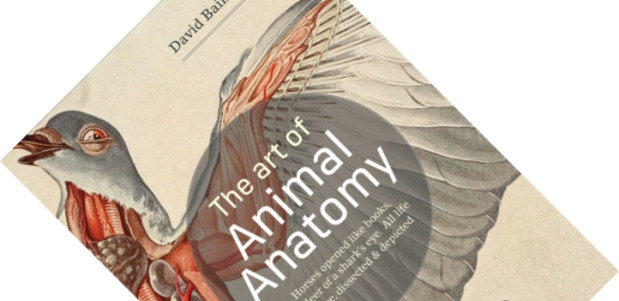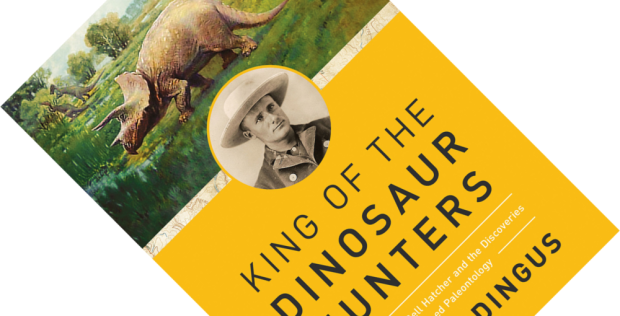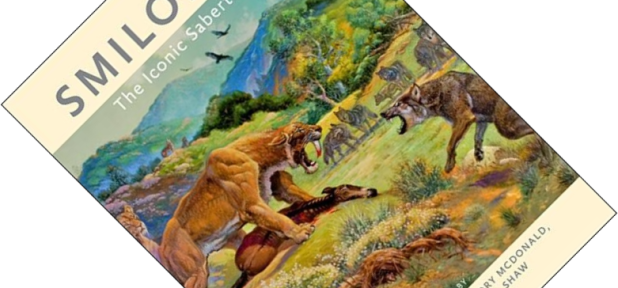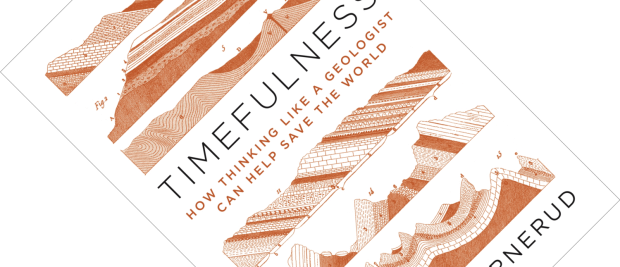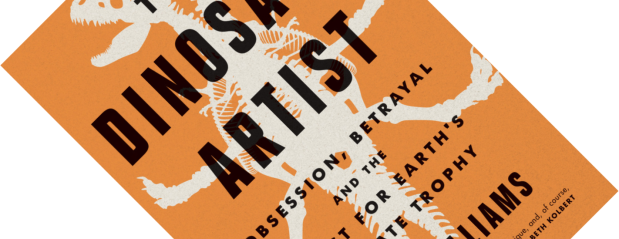Animal anatomy has fascinated artists and scientists for millennia, resulting in a treasure trove of striking images. Veterinary anatomist David Bainbridge here takes on the brave task of curating a birds-eye-view of anatomical artwork that simultaneously delights, educates, and (for some perhaps) horrifies.
palaeontology
Book review – Across the Bridge: Understanding the Origin of the Vertebrates
When you think of an animal, you will most likely think of a vertebrate. Since we are animals with a backbone ourselves, it is not strange that that which is closest to us comes to mind first. But when and how did vertebrates evolve? To answer that question, Nature editor Henry Gee takes a good hard look at invertebrates, convincing the reader that they are not all equal. More than 20 years ago, Gee wrote Before the Backbone: Views on the Origin of the Vertebrates, which took a look at historical explanations for the origins of vertebrates. Which group of invertebrates is closest to us remains a topic of active research and Across the Bridge brings readers up to date with our current thinking.
Book review – King of the Dinosaur Hunters: The Life of John Bell Hatcher and the Discoveries that Shaped Paleontology
When I think of turn-of-the-20th-century palaeontology, names such as Othniel Charles Marsh and Edward Drinker Cope are the first to come to mind. Their infamous rivalry, known as the Bone Wars, relied heavily on field collectors who did the back-breaking labour of prospecting and quarrying for fossils. Most of these bone hunters are barely remembered, and John Bell Hatcher might very well have remained thus. This meticulous biography by American palaeontologist Lowell Dingus saves Hatcher from obscurity and documents both his hugely successful work as a bone hunter, as well as his later stellar but tragically short-lived career as a curator.
Book review – When Humans Nearly Vanished: The Catastrophic Explosion of the Toba Volcano
When it comes to big volcanic eruptions, names such as Vesuvius, Mount Saint Helens, and Krakatau will ring a bell. But all of these are dwarfed by a far larger eruption that few outside of the science community will have heard of. Noted geologist, palaeontologist and author Donald R. Prothero here tells the story of the eruption of Mount Toba in what is nowadays Sumatra, Indonesia, some 74,000 years ago. An eruption so gargantuan that it almost wiped out the human race.
Book review – Smilodon: The Iconic Sabertooth
When it comes to Ice Age fame, sabertooth cats are right up there with mammoths. And within the sabertooth cats, the best-known group is the genus Smilodon. Even if you have not heard that name, you will very likely have seen it depicted. Rather than a pop-science book, this edited collection brings together the who-is-who of sabertooth palaeontology to provide a thorough and technical overview of the current state of the field. And if I did not know any better, I would say that the research community has developed an almost unhealthy obsession with this cat’s large canine teeth.
Book review – Timefulness: How Thinking Like a Geologist Can Help Save the World
At first blush, you might think this book is part of the ongoing craze of spiritual mindfulness books. But let me refrain from snarky comments. Geologist Marcia Bjornerud does indeed want to instil a sense of mindfulness about deep time, but one that is, pardon the pun, grounded in geology. In her opinion, most of us lack an awareness of durations of important chapters in our planet’s history and of rates of change of many natural processes. As a consequence, we fail to see just how rapidly we are altering our planet. In one of the first paragraphs she eloquently writes:
“Like inexperienced but overconfident drivers, we accelerate into landscapes and ecosystems with no sense of their long-established traffic patterns, and then react with surprise and indignation when we face the penalties for ignoring natural laws”.
And with that, she had me hooked.
Book review – The Palaeoartist’s Handbook: Recreating Prehistoric Animals in Art
Given that dinosaurs are no longer around, everything you think you know about what they look like comes from illustrations, models, movies, and merchandise. But how much of this is actually accurate, and how much of it is rather geared towards appealing to our sensibilities? Mark Witton is a man with a mission: to elevate the genre of palaeoartistry to one depicting scientifically accurate renditions, based on informed speculation and careful study of fossils and anatomy. Rather than a book that shows you how to draw a dinosaur, The Palaeoartist’s Handbook is a fantastically useful primer for both aficionados and budding artists into what actually can and should go into making good palaeoart.
Book review – The Dinosaur Artist: Obsession, Betrayal, and the Quest for Earth’s Ultimate Trophy
Where do fossils belong? Should they be housed in museums, available for study by scientists to learn more about our planet’s deep history? Or can they be treated like exclusive souvenirs, traded and auctioned on a market that stocks the private collections of rich people? Journalist Paige Williams here tells the full story, warts and all, of a high-profile auction gone awry. She initially reported on this in 2013 in the New Yorker. Up for sale? A fully reconstructed skeleton of Tarbosaurus bataar, the Asian cousin of Tyrannosaurus rex.
Book review – Land Bridges: Ancient Environments, Plant Migrations, and New World Connections
Before plate tectonics became an accepted idea in geology, Lyell’s doctrine of uniformitarianism still ruled supreme (see my review of Cataclysms: A New Geology for the Twenty-First Century for a short introduction). A corollary was that the continents supposedly had always been where they are now. One observation scholars had to explain away was that the same fossils occur on both sides of the various oceans. Looking at maps, some people noticed the thin strip of land connecting North and South America and concluded that land bridges must have formed and sunk beneath the waves at just the right times in history to enable migrations (see Four Revolutions in the Earth Sciences: From Heresy to Truth for more details). As explained in The Tectonic Plates are Moving!, we know better nowadays. Nevertheless, the concept of land bridges is still alive and well today, and palaeobotanist Alan Graham here introduces five of them, exploring their effects on biogeography, climate, and human history.
Book review – Earth History and Palaeogeography
This book is an example of what happens when you go down rabbit holes. I have been reading several books on the subject of palaeontology and geology lately, and I know that the face of the earth has shifted over the hundreds of millions of years of deep history covered in these books. But where were all the continents at different times? Many will have seen the iconic maps of the supercontinent Pangaea. But I want to know more. What happened in between? And before? As Nield tells in Supercontinent: 10 Billion Years in the Life of Our Planet, Pangaea was only one of several such supercontinents in Earth’s history. But I want to know more still. Where exactly were the continents located? And how did they move? Several accessible books have provided snapshots of iconic moments, such as the formation of the Himalayas (Mike Searle’s Colliding Continents: A Geological Exploration of the Himalaya, Karakoram, & Tibet) or the disappearance of the Tethys ocean (Dorrik Stow’s Vanished Ocean: How Tethys Reshaped the World). But I want to know more! This technical reference work contains lots of fantastic palaeogeographical maps that answered all my questions.

